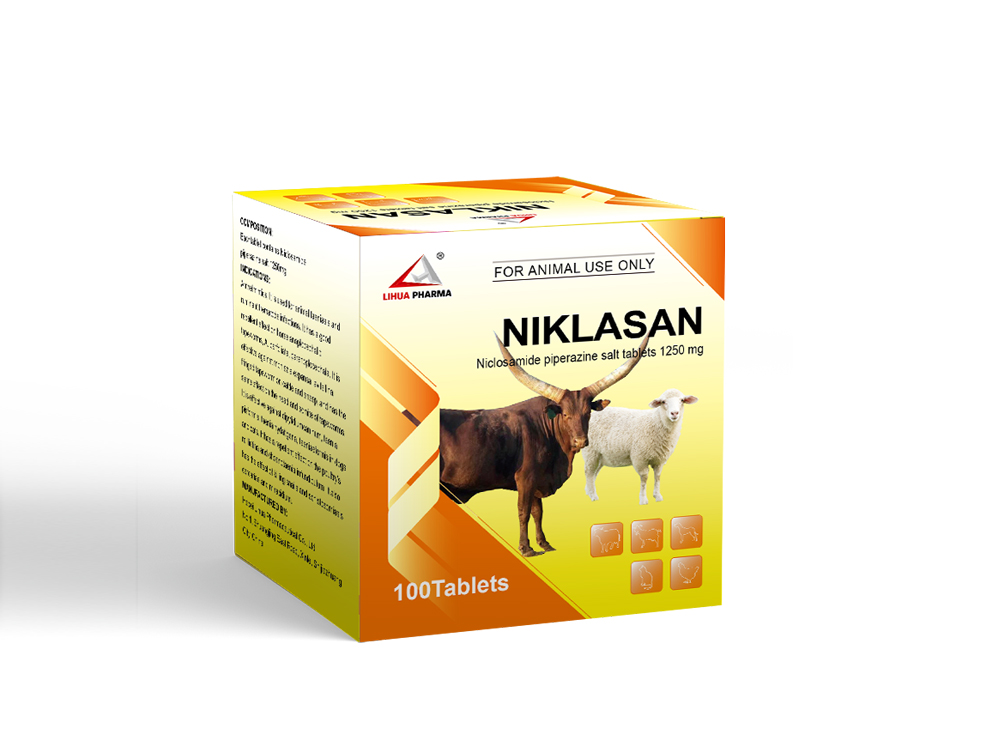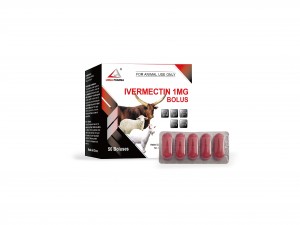Niclosamide Bolus 1250 mg
Niclosamide Bolus inhibits phosphorylation in the mitochondria of cestodes. Both in vitro and in vivo, the scolex and proximal segments are killed on contact with the drug. The loosened scolex may be digested in the intestine; hence, it may be impossible to identify the scolex in the faeces. Niclosamide Bolus is taenicidal in action and eliminates not only the segments but also scolex.
Niclosamide Bolus activity against the worms appears to be due to inhibition of mitochondrial oxidative phosphorylation; anaerobic ATP production is also affected.
The cestocidal activity of Niclosamide Bolus is due to the inhibition of absorbtion of glucose by the tapeworm and to the uncoupling of the oxidative phosphorylation process in the mitochondria of cestodes. The accumulated lactic acid resulting from the blocking of Krebs cycle kills the worms.
Indications
Niclosamide Bolus is indicated in both tapeworm infestation of Livestock, Poultry, Dogs and Cats and also in immature paramphistomiasis (Amphistomiasis) of Cattle, Sheep and Goats.
Tapeworms
Cattle, Sheep Goats and Deer: Moniezia Species Thysanosoma (Fringed Tape worms)
Dogs: Dipylidium Caninum, Taenia Pisiformis T. hydatigena and T. taeniaeformis.
Horses: Anoplocephalid infections
Poultry: Raillietina and Davainea
Amphistomiasis: (Immature Paramphistomes)
In cattle and Sheep, Rumen flukes (Paramphistomum species) is very common. Whereas the adult flukes attached to the rumen wall could be of little significance, the immature ones are seriously pathogenic causing heavy damage and mortality while migrating in the duodenal wall.
Animals showing symptoms of severe anorexia, increased intake of water, and watery fetid diarrhoea should be suspected for amphistomiasis and immediately treated with Niclosamide Bolus to prevent death and loss of production since Niclosamide Bolus provides consistently very high efficacy against the immature flukes.
Composition
Each uncoated bolus contains:
Niclosamide I.P. 1.0 gm
Administration and dosage
Niclosamide Bolus in feed or as such.
Against Tapeworms
Cattle, Sheep and Horses: 1 gm bolus for 20 kg body weight
Dogs and Cats: 1 gm bolus for 10 kg body weight
Poultry: 1 gm bolus for 5 adult birds
(Approximately 175 mg per kg body weight)
Against Amphistomes
Cattle & Sheep: Higher dosage at the rate of 1.0 gm bolus / 10 kg body weight.
Safety: Niclosamide bolus has a wide margin of safety. Overdosing of Niclosamide upto 40 times in sheep and cattle have been found to be non-toxic. In Dogs and cats, twice the recommended dosage causes no ill effects except softness of the faeces. Niclosamide bolus can safely be used in all phases of pregnancy and in debilitated subjects without adverse effects
You may also be interested











